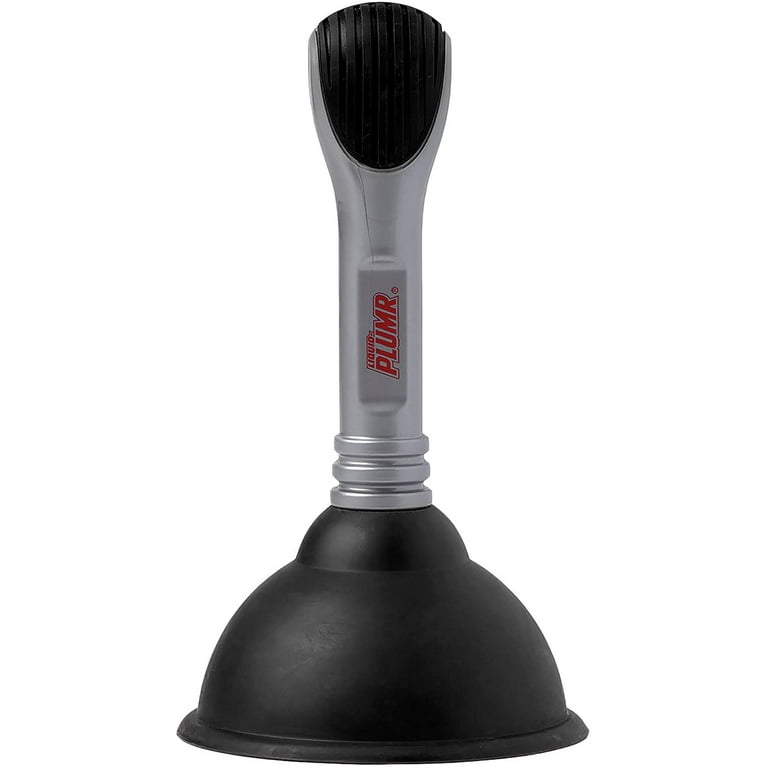Using Plungers and Drain Cleaner: Expert Strategies
Using Plungers and Drain Cleaner: Expert Strategies
Blog Article
Just about everyone may have their unique conception in relation to Tips on How to Effectively Use a Plunger.

Introduction
Proper maintenance of household drains is essential for preventing clogs and ensuring smooth water flow. One of the key tools in every homeowner's toolkit is the plunger, alongside various drain cleaners designed to tackle stubborn clogs effectively. This article explores how to use plungers and drain cleaners effectively to keep your drains flowing freely.
Section 1: Understanding Drain Cleaners
Types of Drain Cleaners
Drain cleaners can be chemical or enzymatic. Chemical cleaners use strong chemicals to dissolve clogs, while enzymatic cleaners use natural enzymes to break down organic matter.
How Drain Cleaners Work
Chemical cleaners react with clogs to dissolve them, while enzymatic cleaners break down organic materials like hair and grease without harming pipes.
Safety Considerations
Always wear gloves and eye protection when using chemical drain cleaners. Ensure adequate ventilation and follow manufacturer instructions carefully.
Eco-Friendly Alternatives
Consider using vinegar and baking soda or enzyme-based cleaners for eco-friendly options that are safer for pipes and the environment.
Section 2: Understanding Plungers
Types of Plungers
There are several types of plungers available, each designed for different types of drains and clogs. The most common types include cup plungers, flange plungers, and accordion plungers.
How Plungers Work
Plungers work on the principle of creating pressure and suction to dislodge clogs. When properly applied over a drain, they create a vacuum that can pull out debris or break up blockages.
Choosing the Right Plunger
Selecting the right plunger depends on the type of drain and the nature of the clog. Cup plungers are ideal for sinks and tubs, while flange plungers are better suited for toilets due to their design.
Common Mistakes with Plungers
Avoiding these mistakes ensures effective plunging: improper seal around the drain, insufficient force, and not clearing surrounding debris.
Section 3: Using Drain Cleaners Effectively
Application Techniques
Pour chemical cleaners directly into the drain opening. Allow them to work for the recommended time before flushing with hot water. Enzymatic cleaners should sit overnight.
Precautions
Avoid mixing different types of cleaners, as this can produce toxic fumes. Never use chemical cleaners in conjunction with a plunger, as splashing can occur.
Handling Stubborn Clogs
For persistent clogs, consider using a plumbing snake or calling a professional plumber to prevent damage to pipes.
Section 4: Using Plungers Effectively
Preparation
Before plunging, ensure the plunger covers the drain completely and forms a tight seal. Clear any visible debris around the drain opening.
Technique
Start with gentle plunging motions to build suction. Increase pressure gradually, using a steady rhythm. Repeat as necessary until the drain clears.
Troubleshooting Tips
If plunging doesn't work, try adjusting the seal, applying petroleum jelly for a better seal, or using a different type of plunger.
Conclusion
In conclusion, understanding how to use plungers and drain cleaners effectively is essential for maintaining healthy plumbing systems. By choosing the right tools and techniques, homeowners can tackle minor clogs and prevent major plumbing issues down the line.
How to Use a Plunger to Unclog a Drain
The humble plunger is a simple yet effective tool for breaking clogs in sinks, tubs and toilets. This handy tool is easy to use. You can make the most of its power if you understand how it works. Ready to dive in? Here’s what you need to know.
Safety First!
Never use a plunger with drain chemicals. Water will splash as you work, and the chemicals can spatter, burning skin and eyes. It’s a good idea to use rubber gloves and wear safety goggles when you work on a clog.
Choose the Right Tool for the Job
Plungers come in two different styles. Sinks, bathtubs and showers require a cup plunger. Like its name suggests, the rubber end is shaped like a cup. Use a flange plunger on toilets. These plungers have a rubber funnel extending from the cup. A plunger needs to be big enough to cover the drain.
Ready, Set, Plunge!
Coat the rim: Coat the plunger rim with petroleum jelly. This helps make a better seal.
Block outlets: Hold a wet rag over nearby outlets such as the overflow vent or the drain in a second sink.
Release air: Insert the plunger at an angle into the water. Water will displace air in the cup. A water-filled cup is more forceful than one filled with air.
Keep the plunger upright: Hold the plunger perpendicular to the drain. Use fast, forceful strokes, but make the first stroke gentle. The first stroke can create a splash if the cup still contains air. Thrust the plunger 15 to 20 times.
Snap off the plunger: The final stroke should be a strong upward motion that ends when the plunger snaps off the drain.
Repeat the process: you may need to repeat this sequence several times. When the water drains away, your work is done. High-five! https://plumbernw.com/blog/how-to-use-a-plunger-to-unclog-a-drain/

How to Use a Plunger to Unclog a Drain
The humble plunger is a simple yet effective tool for breaking clogs in sinks, tubs and toilets. This handy tool is easy to use. You can make the most of its power if you understand how it works. Ready to dive in? Here’s what you need to know.
Safety First!
Never use a plunger with drain chemicals. Water will splash as you work, and the chemicals can spatter, burning skin and eyes. It’s a good idea to use rubber gloves and wear safety goggles when you work on a clog.
Choose the Right Tool for the Job
Plungers come in two different styles. Sinks, bathtubs and showers require a cup plunger. Like its name suggests, the rubber end is shaped like a cup. Use a flange plunger on toilets. These plungers have a rubber funnel extending from the cup. A plunger needs to be big enough to cover the drain.
Ready, Set, Plunge!
https://plumbernw.com/blog/how-to-use-a-plunger-to-unclog-a-drain/
We hope you enjoyed our section on A Guide to Plungers (and How to Use Them). Thanks so much for taking a few minutes to browse our piece. Are you aware of another individual who is fascinated with the subject? Be sure share it. I thank you for your readership.
This Site Report this page